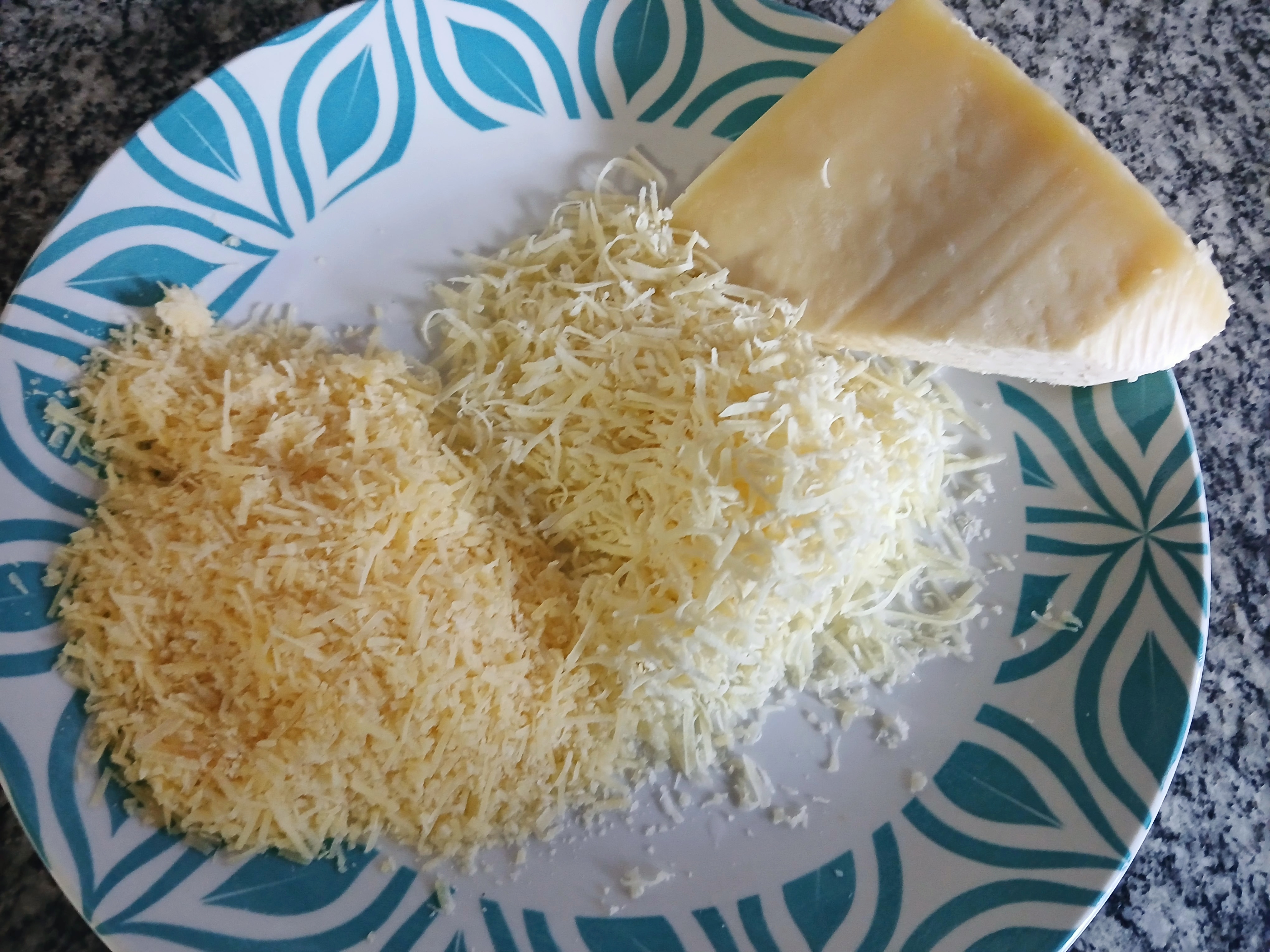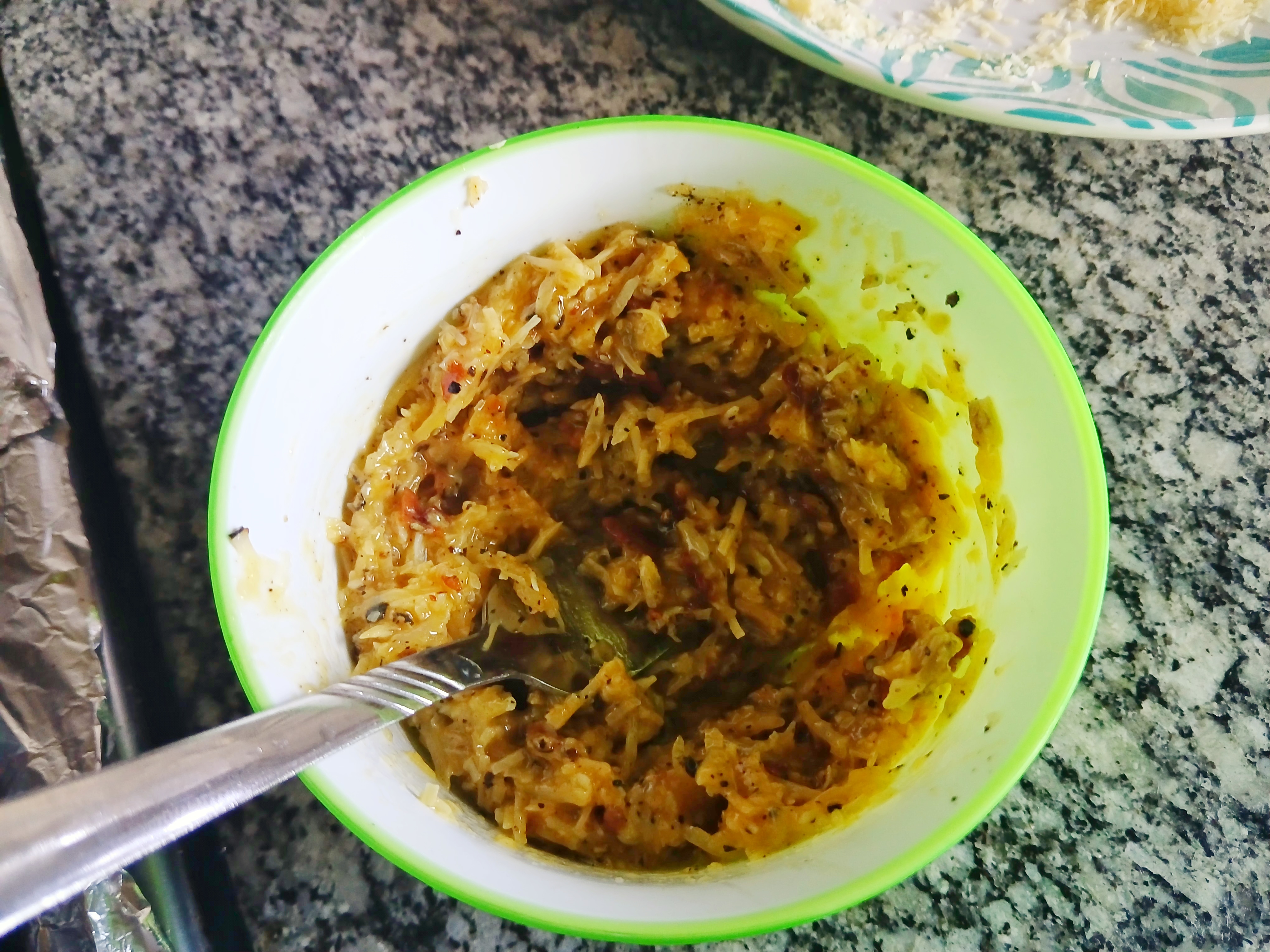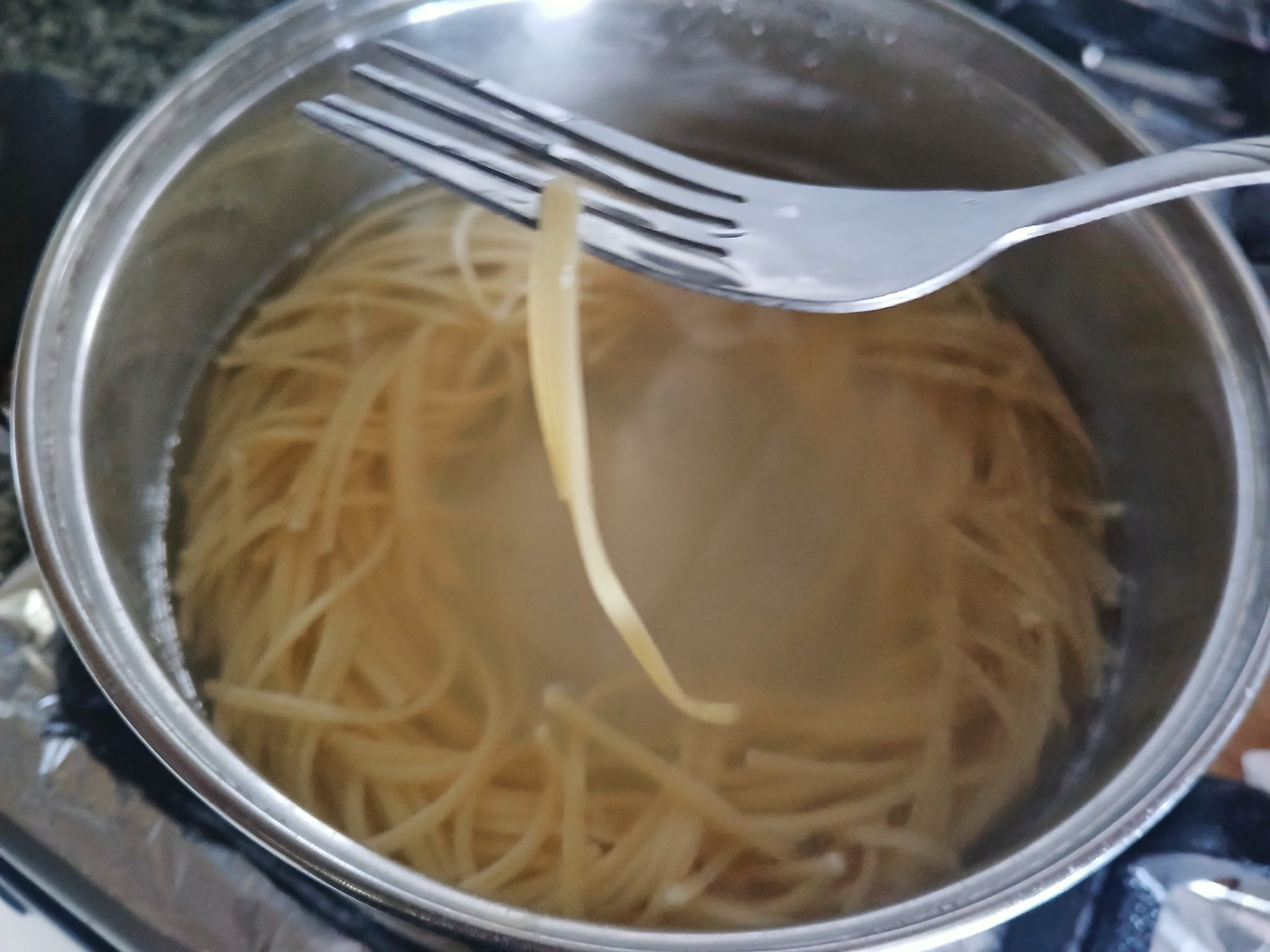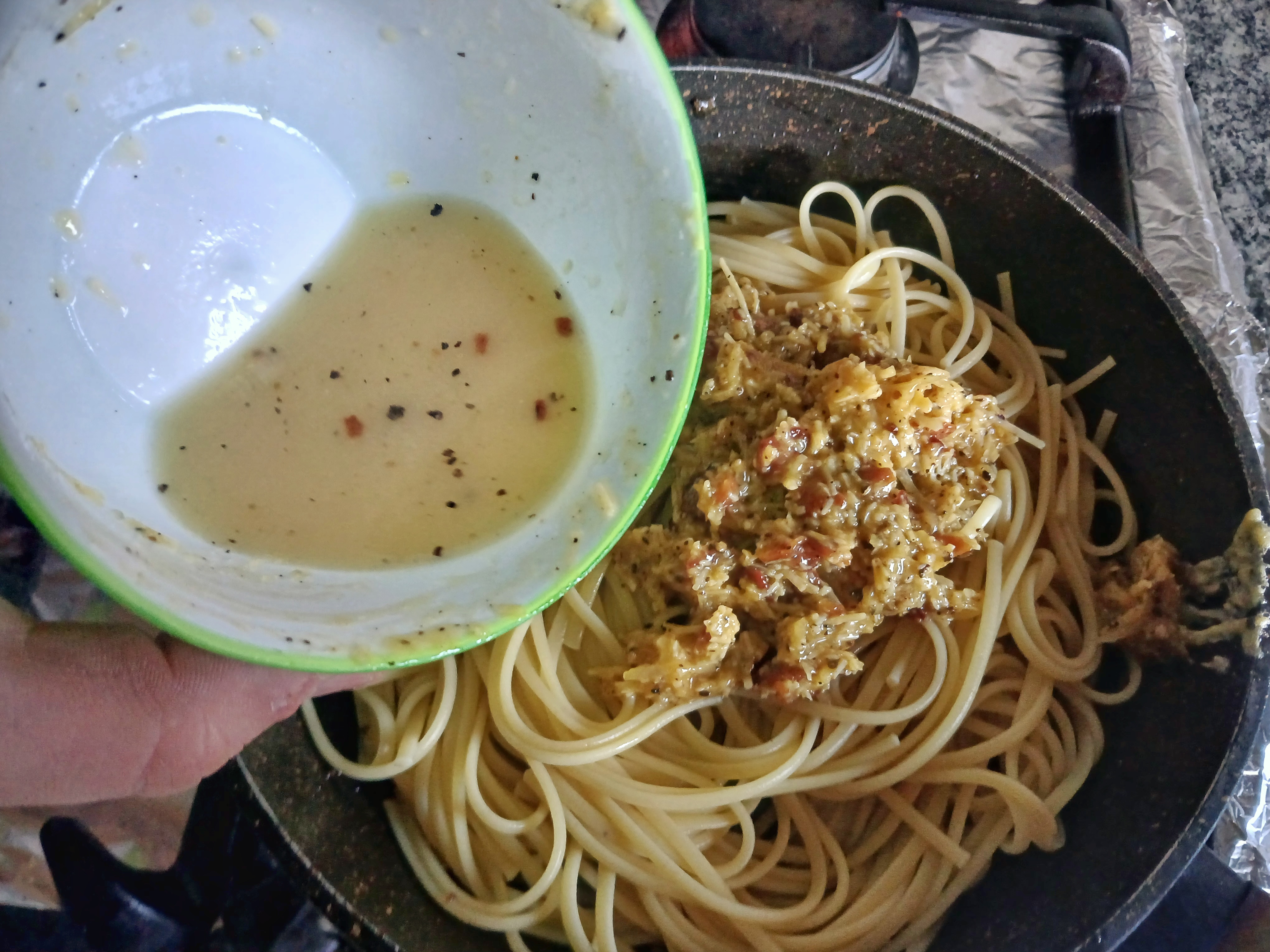Hola a todos en la comunidad, cómo se encuentran? El día de hoy queria compartir con ustedes un clásico de la cocina italiana, la pasta carbonara, pero estará estará basada en su receta original, con la yema del huevo, quesos y embutidos, dándole un sabor muy diferente a lo que había provado anteriormente.
Hello everyone in the community, how are you? Today I wanted to share with you a classic of Italian cuisine, pasta carbonara. This one will be based on the original recipe, with egg yolk, cheeses, and cured meats, giving it a very different flavor than anything I've tried before.

Lo diferencial en esta receta, es que trate de hacerla lo mas cercano a la original que pude, por lo que apenas conseguí guanciale, no dude en que tenia que hacerla, pues para serles sinceros, en mi ciudad es muy complicado conseguirlo, asi mismo, utilicé dos quesos, el pecorino romano, parte de la receta original, y queso parmesano, uno muy utilizado actualmente y que contraste muy bien con el primero.
What sets this recipe apart is that I tried to make it as close to the original as I could, so as soon as I could find guanciale, I had no doubt that I had to make it, because to be honest, it's very difficult to get in my city. I also used two cheeses: Pecorino Romano, part of the original recipe, and Parmesan cheese, one that is widely used today and that contrasts very well with the first.

Ingredientes / Ingredients:
- 100 gr de Guanciale / 100 gr of Guanciale
- 2 Huevos / 2 Eggs
- 50 gr de Queso Pecorino Romano / 50 gr of Pecorino romano Cheese
- 50 gr de Queso Parmesano / 50 gr of Parmesan Cheese
- Spaghetti / Spaghetti
- Granos de Pimienta / Peppercorns
- Sal al gusto / Salt to taste
Preparación / Preparation:
1- Empezaremos por preparar todos los ingredientes para la salsa de la Carbonara / We will start by preparing all the ingredients for the Carbonara sauce.
Empezaremos por picar la mitad del guanciale en trozos medianos, ya que este tiene un sabor bien distintivo, y de esta forma, en cada bocado podremos sentir su sabor y crocancia.
We'll start by chopping half the guanciale into medium-sized pieces, as it has a very distinctive flavor, and this way, we'll be able to taste its flavor and crunchiness in every bite.

La otra mitad la picaremos en trozos mas pequeños, ya que son los que agregaremos a la salsa. No es necesario agregar aceite, ya que este embutido tiene bastante grasa, que la iran soltando poco a poco.
We'll chop the other half into smaller pieces, as we'll add them to the sauce. It's not necessary to add oil, as this sausage has quite a bit of fat, which it will gradually release.
.heic)
Cuanto haya soltado toda su grasa, y estén bien crocantes y dorados, hay que sacarlos del sarten y los reservaremos hasta montar la salsa o servir. La grasa que quedo en el sarten reservala también, pues hace parte importante de la salsa.
Once they've rendered all their fat and are crispy and golden brown, remove them from the pan and set them aside until you're making the sauce or serving. Reserve the remaining fat in the pan as well, as it's an important part of the sauce.

En cuánto a los quesos, si me daré un poquito mas de libertad contraponiendo la receta original, pues quiero agregar además del pecorino, otros 50gr de queso parmesano, ya que realmente me gusta mucho, jajaja.
As for the cheeses, I'll give myself a little more freedom by contrasting the original recipe, because I want to add, in addition to the pecorino, another 50g of Parmesan cheese, since I really like it a lot, hahaha.
Lo ideal seria rallarlo aún mas fino, para que se integre mucho mejor en la emulsión, porque tengo que decir que me costó un poco llegar a esa cremosidad que buscaba, sin grumos.
The ideal would be to grate it even finer, so that it integrates much better into the emulsion, because I have to say that it took me a while to achieve that creaminess I was looking for, without lumps.

La pimienta es un ingrediente indispensable en esta receta, ya que aporta un picor y aroma únicos, por lo que yo utilicé granos de pimienta completos molidos en molcajete, ya que siento que es la mejor forma de resaltar sus sabores.
Pepper is an indispensable ingredient in this recipe, as it provides a unique heat and aroma, so I used whole peppercorns ground in a molcajete, as I feel it's the best way to highlight their flavors.

Luego separaremos las yemas de las claras de ambos huevos, ya que utilizaremos las primeras para crear la emulsión. Las claras las puedes guardar, y como en mi casa, junto a otro huevo, puedes hacerte una tortilla alta en proteinas y mas saludable.
Next, we'll separate the yolks from the whites of both eggs, as we'll be using the former to create the emulsion. You can save the whites, and like at my house, along with another egg, you can make a high-protein and healthier omelet.
.heic)
Una vez que tengamos ya todo listo, en otro recipiente vamos a agregar las yemas de los huevos, el queso, la pimienta, el guanciale triturado y la pimienta, revolviendo todo muy bien. Recuerda guardar los trozos mas grandes del embutido para cuando vayamos a emplatar.
Once everything is ready, in another bowl, add the egg yolks, cheese, pepper, crushed guanciale, and pepper, stirring everything well. Remember to save the larger pieces of sausage for when you're ready to serve.

La idea es que no quede tan espesa la mezcla, pero no importa mucho, porque la podremos emulsionar con el agua de la cocción de la pasta, dándole la consistencia que querramos. Esto me paso por el tamaño del queso, por lo que siempre es mejor rallarlo mas fino antes de agregarlo.
The idea is not to make the mixture too thick, but it doesn't matter much because we can emulsify it with the pasta cooking water, giving it the desired consistency. This happened to me because of the size of the cheese, so it's always better to grate it more finely before adding it.

2- Ahora viene la parte mas sencilla, cocinar la pasta / Now comes the easiest part: cooking the pasta.
Las medidas que estoy utilizando son para 2 o 3 personas, y que el sabor se mantenga muy presente en cada bocado, por lo que calcularemos la cantidad de pasta de acuerdo a eso.
The measurements I'm using are for 2 or 3 people, and I want the flavor to remain present in every bite. So, we'll calculate the amount of pasta accordingly.
Yo tomé dos medidas con los dedos, pero eso depende del gusto de cada uno, y lo otro es tratar de no romper la pasta, ya cuando el agua este hirviendo, con una buena cantidad de sal, podremos ir haciendo presion leve en el spaghetti hasta que entre todo en la olla.
I took two finger measurements, but that depends on each person's taste. The other thing is to try not to break the pasta. Once the water is boiling, with a good amount of salt, we can gently press the spaghetti until it all fits in the pot.

Cuando la pasta ya este al dente, es decir, que al morderla, aún se sienta un poquito dura, apagaremos la llama y estaremos listo mas la parte mas importante de la receta.
When the pasta is al dente, meaning that it still feels a little hard when you bite into it, we'll turn off the heat and we'll be ready for the most important part of the recipe.

3- En un sarten o olla antiadherente, vamos a crear la emulsión de la pasta / In a nonstick pan or pot, we'll create the pasta emulsion.
En el sarten vamos a agregar unos dos cucharadones del agua de cocción de la pasta y luego la pasta, y con fuego bajo en la hornilla, agregaremos la mezcla de carbonada.
In the pan, we'll add about two tablespoons of the pasta cooking water, then the pasta. Over low heat, we'll add the carbonada mixture.

Y con un poquito de esa agua de la pasta, vamos a terminar de agregar todo lo que quede en el recipiente, para no perder nada de sabor.
And with a little bit of that pasta water, we'll finish adding everything left in the bowl, so as not to lose any flavor.

Con movimientos envolventes, buscaremos que la mezcla se vuelvo homogénea con el agua, evitando que queden grumos. En vista de que no podía modular mucho la intensidad de la llama, decidí hacerlo con calor indirecto, como una especie de baño María.
Using circular motions, we'll try to make the mixture even with the water, avoiding lumps. Since I couldn't regulate the flame intensity much, I decided to do it with indirect heat, like a double boiler.
Esto es indispensable, ya que si se calienta demasiado el sarten, la mezcla se solidificará, y no conseguiremos que la misma emulsione.
This is essential, because if the pan is heated too much, the mixture will solidify, and we will not be able to emulsify it.

Deberiamos conseguir una consistencia como esta, donde todos los ingredientes se intregen perfectamente. El queso parmesano que se ve en los laterales, fue añadido luego de servir.
We should achieve a consistency like this, where all the ingredients are perfectly combined. The Parmesan cheese you see on the sides was added after serving.

Ya por ultimo, lo que queda es sirvir nuestra Pasta a la Carbonara / Finally, all that's left is to serve our Pasta Carbonara.
Luego de servir en un plato, vamos a coronar la pasta con un poquito de queso parmesano, ya que me parece que tiene un sabor menos intenso que el pecorino, y por último, los trozos que nos sobraron del guanciale.
After serving it on a plate, we'll top the pasta with a little Parmesan cheese, as I find it has a less intense flavor than pecorino, and finally, the leftover pieces of guanciale.
